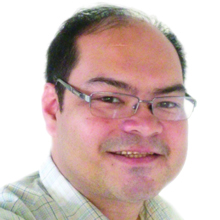#MINDANAO

There will always be a place in our memories that brings familiar and comforting thoughts and feelings helping us deal with today’s complex world. In my case it is a roundabout, sometimes called a rotunda, or a circular road in Brgy. Pala-o in Iligan City. It lies at the end of Ubaldo Laya Avenue, which is one of the major corners of Quezon Avenue where many new restaurants form “the strip.” When viewing the city from Google Earth, the roundabout is easily one of Iligan’s most recognizable land features. It is surrounded by residential dwellings, the Iligan Medical Center, and student boarding houses.
In the 1970s and 1980s, this roundabout circled a quaint, grassy park where neighborhood boys and men played football in the cloudy afternoons that made way for the blazoned sunset over Iligan Bay. I once saw a helicopter land and take off in this expansive area. Afternoons around this park were delightful scenes of tartanillas, or horse-drawn carriages, moving along this road, the familiar clop-clop of horse hooves heralding the approach of the familiar mode of transport.
At that time, worldpopulationreview.com listed Iligan's population in 1979 at 158,000 residents, less than half of the 2020 census which tallies 363,115 residents. Back then, the city's downtown area was a kilometer to the north. We had just held the 1978 Interim Batasang Pambansa elections then, and in the United States, the Carter administration gave way to the Reagan era. After the ESDA events in 1986, succeeding administrations led the country into the 1990s.
Amid these historical events, the roads leading to the roundabout were concreted, changing the asphalt surface that I once walked and drove through on my way to the once rough and quiet backroads of the city leading to nearby hills. At that same time, the rise of technology saw old crossbar telephone systems replaced by digital fixed lines and the now ubiquitous cellular telephone systems. Cable television had become a major portal for news and entertainment apart from the two free-to-air channels that served the city. More Frequency Modulation (FM) stations were established, bringing more music and information to the airwaves. At around this time, the internet started taking root, bringing more of the world to the city. As the 90s progressed into the second millennium, trees were planted in the roundabout park now shading pathways where people walked in the afternoons.
As we entered the 2010s, we saw bigger malls and hotels, a vast and varied array of restaurants and cafes now dot the city. The backroad areas I once biked through now host subdivisions and the integrated bus terminal. A highway now traverses the hills, with restaurants offering a view of the city, the bay, and the great sunset. The roundabout is now surrounded by an expanded city.
Having driven and walked along this roundabout through the decades, much history may have passed and growth has happened but the road has remained the same to me. Every time I turn into and drive around this roundabout the same familiar sensations come, a familiar gush of emotions that open the portal to these happy memories stored in my memory banks. These often reveal the world I remember as a calmer, gentler one despite whatever strife, confusion, or turmoil attended at that age. These delightful remembrances provide a soothing balm to the scrapes we gather as we face today’s complex uncertainties. I’m thankful for these memories.
As we face the future, we all need our familiar roundabouts where calming memories soothe us.